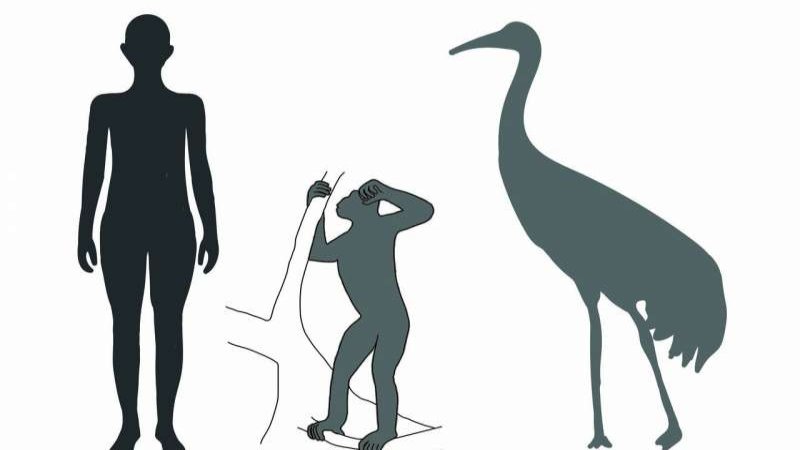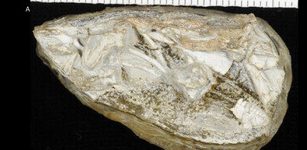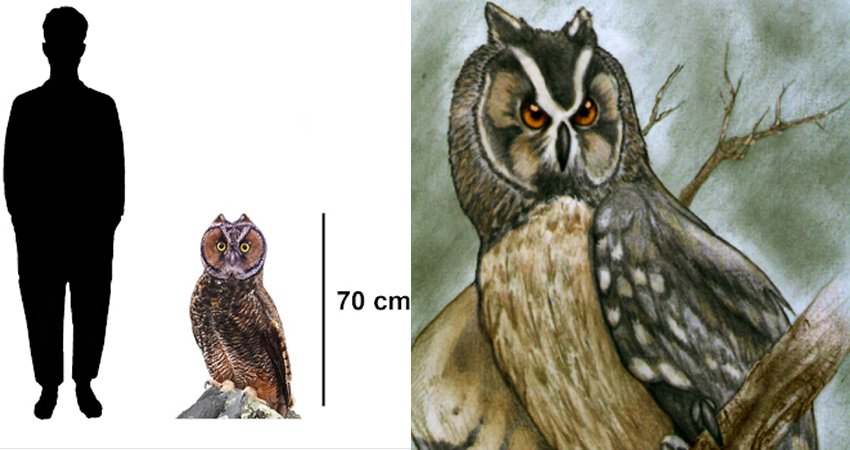Fossil Of A Giant Crane As Tall As An Adult Human Is More Than 11 Million Years Old
Eddie Gonzales Jr. – MessageToEagle.com – Researchers from Frankfurt and Tübingen say the skull of a very large crane found at the Hammerschmiede fossil site in Allgäu, Bavaria, is more than eleven million years old.
It is the earliest evidence of such a large crane in Europe, the paleontologists say.
Comparison of the silhouettes of a modern man (height 175 cm) with Danuvius guggenmosi (the male individual ‘Udo’) and the giant crane from the Hammerschmiede fossil site in southern Bavaria. Credit: Agnes Fatz, Senckenberg
The fossil most closely resembles the skull of today’s long-beaked Siberian crane, according to Gerald Mayr of the Senckenberg Research Institute, Frankfurt, and Thomas Lechner and Professor Madelaine Böhme of the Senckenberg Centre for Human Evolution and Palaeoenvironment at the University of Tübingen. Late last year Hammerschmiede made headlines with the discovery of the bipedal great ape Danuvius guggenmosi, nicknamed Udo.
The newly-discovered crane may well have been the largest bird around at the time.
Among the many fossil remains found at the Hammerschmiede site, a lot originate from birds and yield remarkable information. Only recently, the research team presented fossils of darter birds, which live only in the tropics.
“The latest fossil find indicates that there must have been many more crane species in the past,” says Gerald Mayr, who headed the study.
Today, Europe is home to just one species of crane—the Eurasian crane.
“However, most of the evidence comes from the Mediterranean area, while evidence from central Europe is very scarce.”
There are 15 species of cranes in the world today. The new Hammerschmiede find is the skull of an unusually large species, as tall as the largest cranes alive today, the Sarus Crane in Asia and the Wattled Crane in Africa.
“With a height of 1.75 meters, both species are as tall as an adult human and have wingspans of 2.6 to 2.8 meters,” says Mayr. This means the Hammerschmiede crane, which lived around eleven million years ago and still has no scientific name, was 75 percent larger than ‘Udo,’ the hominid with whom it shared a habitat. The newly-discovered crane may mark the starting-point of the evolution of the true cranes.
“To make a more secure phylogenetic classification, we need to find more of the skeleton,” Mayr adds.
The beak is significantly longer than that of today’s European cranes. Long-billed members of the family, like the Siberian crane, have a mainly vegetarian diet. They eat the roots and rhizomes of aquatic plants, which they dig up with their beaks.
“The Hammerschmiede crane’s beak indicates that it lived around open freshwater. Such habitats were prevalent at the site at the time,” says Thomas Lechner, head of the excavation. He hopes to carry out excavations at the site again this year.
“This find is further proof of the outstanding importance of the Hammerschmiede site for science,” adds Madelaine Böhme, the head of the research project.
Written by Eddie Gonzales Jr. – MessageToEagle.com Staff











